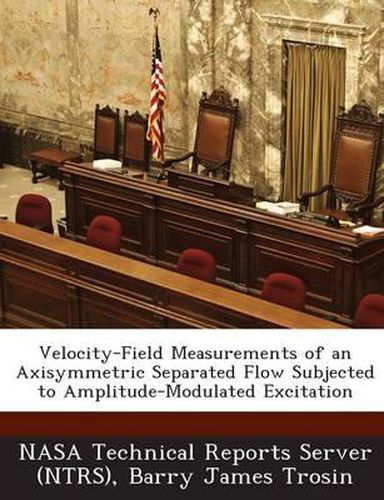Readings Newsletter
Become a Readings Member to make your shopping experience even easier.
Sign in or sign up for free!
You’re not far away from qualifying for FREE standard shipping within Australia
You’ve qualified for FREE standard shipping within Australia
The cart is loading…






Active flow control was applied at the point of separation of an axisymmetric, backward-facing-step flow. The control was implemented by employing a Helmholtz resonator that was externally driven by an amplitude-modulated, acoustic disturbance from a speaker located upstream of the wind tunnel. The velocity field of the separating/reattaching flow region downstream of the step was characterized using hotwire velocity measurements with and without flow control. Conventional statistics of the data reveal that the separating/reattaching flow is affected by the imposed forcing. Triple decomposition along with conditional averaging was used to distinguish periodic disturbances from random turbulence in the fluctuating velocity component. A significant outcome of the present study is that it demonstrates that amplitude-modulated forcing of the separated flow alters the flow in the same manner as the more conventional method of periodic excitation.
$9.00 standard shipping within Australia
FREE standard shipping within Australia for orders over $100.00
Express & International shipping calculated at checkout
Active flow control was applied at the point of separation of an axisymmetric, backward-facing-step flow. The control was implemented by employing a Helmholtz resonator that was externally driven by an amplitude-modulated, acoustic disturbance from a speaker located upstream of the wind tunnel. The velocity field of the separating/reattaching flow region downstream of the step was characterized using hotwire velocity measurements with and without flow control. Conventional statistics of the data reveal that the separating/reattaching flow is affected by the imposed forcing. Triple decomposition along with conditional averaging was used to distinguish periodic disturbances from random turbulence in the fluctuating velocity component. A significant outcome of the present study is that it demonstrates that amplitude-modulated forcing of the separated flow alters the flow in the same manner as the more conventional method of periodic excitation.